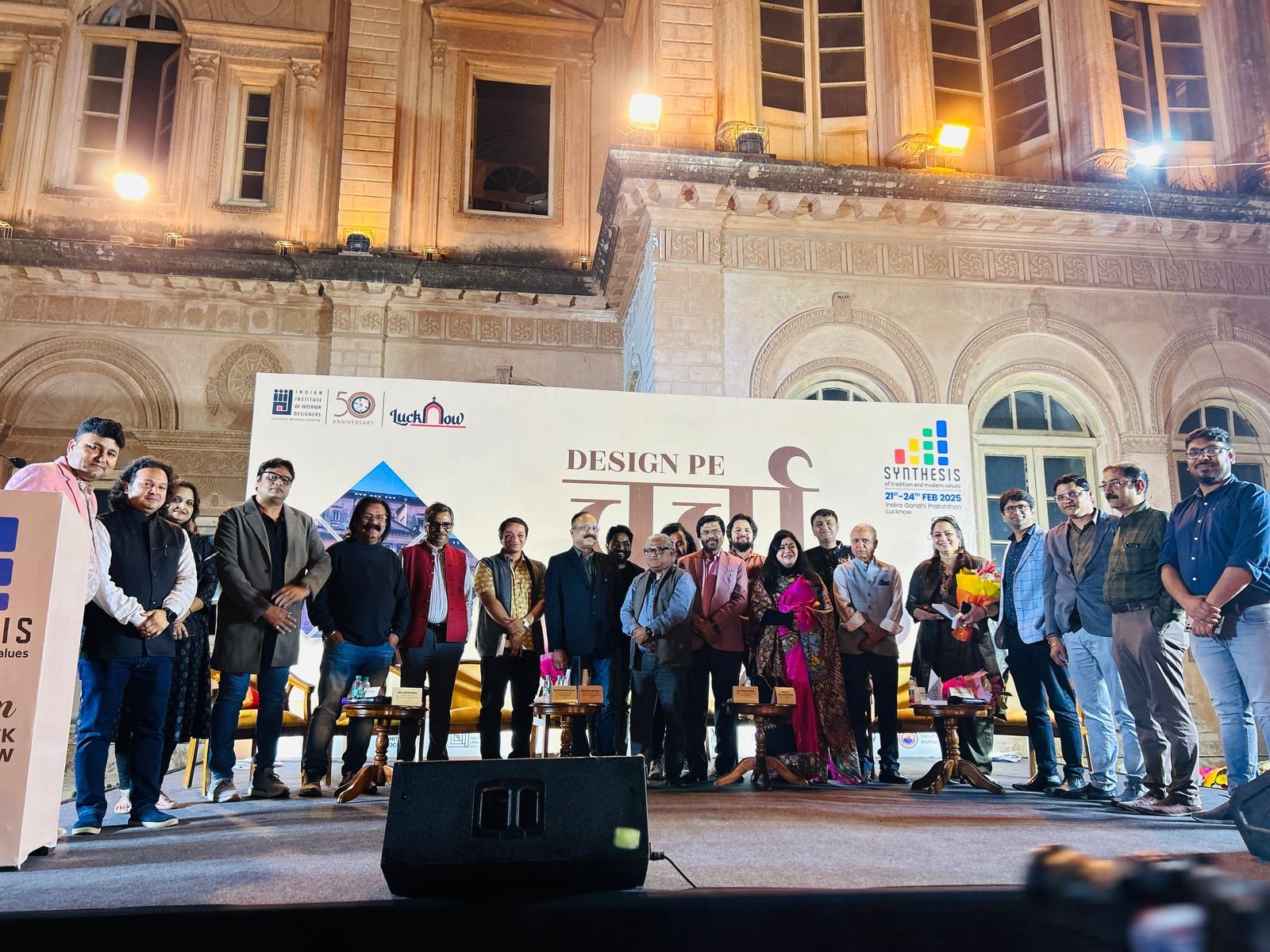Lucknow – “Today’s children prefer visiting malls over historical sites. The culture of social media has made instant gratification the norm, making everything accessible on their phones. In such a scenario, events like these play a crucial role in reigniting interest in history and cultural heritage—not just for children but for everyone.” These were the words of Shri Mukesh Meshram, Principal Secretary of the Tourism and Culture Department, Uttar Pradesh, speaking at ‘Design Pe Charcha,’ an event organized by the Indian Institute of Interior Designers (IIID).
This event was part of a series aimed at raising awareness for IIID’s upcoming premier exhibition on interior design, architecture, and home décor.
‘‘Design Pe Charcha’’ was held at Kothi Gulistan-e-Iram, a historically significant monument in Lucknow. The event was anchored by RJ Vipul, with Dr. Vandana Sehgal, Dean of AKTU FOAP, serving as the moderator.
The event was attended by esteemed personalities, including Prof. Sudheer Mishra, Editor of Navbharat Times, Lucknow; historian and columnist Mr. Ravi Bhatt; renowned space designer Mr. Tauheed; Architect Ashok Kumar, President and Principal Architect at Arch En Design; Architect Vipul Varshney, Co-founder of Sthapati and Convener of INTACH; and Conservation Architect Ashish Shrivastava from ANB Consultants.
During the discussion, Architect Vipul Varshney emphasized the need to preserve and utilize heritage buildings without compromising their essence. He stressed that uncontrolled development should not be permitted within such structures.

Historian Ravi Bhatt provided insights into the history of Kothi Gulistan-e-Iram, explaining that it was originally the personal library of Nawab Nasir-ud-Din Haider, housing thousands of books. After his death, it was converted into a farmhouse by the British government following the First War of Independence in 1857.
He further elaborated that Gulistan-e-Iram was built in the early 19th century by King Nasir-ud-Din Haider, the second king of Awadh. Nawab Nasir-ud-Din Haider ascended the throne at the age of 25 after the death of his father, Nawab Ghazi-ud-Din Haider Shah. Known for his indulgences, he had a keen interest in astrology and astronomy. His reign ended abruptly when he was poisoned by his family and a court member on 7th July 1837.
Dr. Vandana Sehgal shared that the venue was deliberately chosen as part of the college’s initiative to revive some of Lucknow’s oldest architectural marvels and celebrate the city’s rich heritage and bygone ethos.
The event witnessed the presence of prominent IIID members, including Chairperson Architect Prasannajit Sanyal, Chairman-Elect Architect Aviral Agarwal, Secretary Architect Rohit Gupta, and Treasurer Architect Neeraj Kushwaha.





